In the vibrant world of gardening, few things bring as much joy and satisfaction as cultivating a tapestry of colors right in your backyard. Whether you’re just planting your first seed or have a seasoned green thumb, the art of organic gardening offers a rewarding experience that is both earth-friendly and soul-nourishing. By embracing organic practices, you’re not only nurturing your plants but also fostering a healthier ecosystem for future generations.
Organic gardening doesn’t have to be a realm reserved for the expert horticulturist; it can be a fun and creative endeavor for anyone willing to get their hands a little dirty. In this article, we’ll explore 12 colorful hacks that will add a splash of vibrancy to your garden while keeping everything pure and natural. From natural dyes to pest-repelling flowers, these hacks are designed to make your gardening journey as easy as it is exciting.
Get ready to transform your garden into a canvas of life and color with simple, actionable steps that respect nature’s balance. You’ll learn how to use everyday items to enhance your soil, create visually stunning plant arrangements, and naturally deter garden pests. So put on your gloves and grab your trowel—this journey promises to be a delightful blend of creativity and sustainability that will inspire gardeners of all levels.
Plant Brightly Colored Veggie Varieties

Incorporating brightly colored veggie varieties into your garden not only beautifies the space but also adds nutritional diversity to your meals. Consider planting purple cauliflower, which is rich in antioxidants and can be grown just like its white counterpart.
For optimal growth, ensure cauliflower receives at least six hours of sunlight daily and is planted in well-draining, fertile soil. Regular watering is essential, but avoid waterlogging the soil to prevent root rot.
Adding rainbow chard to your garden is an excellent way to introduce vibrant colors and a continuous harvest. These plants thrive in a sunny spot with slightly acidic to neutral soil, enriched with organic matter to encourage lush growth.
Beginner gardeners will appreciate how easily rainbow chard can be direct-seeded after the last frost. More experienced gardeners might try succession planting every two weeks to maintain a steady supply throughout the growing season.
Use Compost for Richer Soil
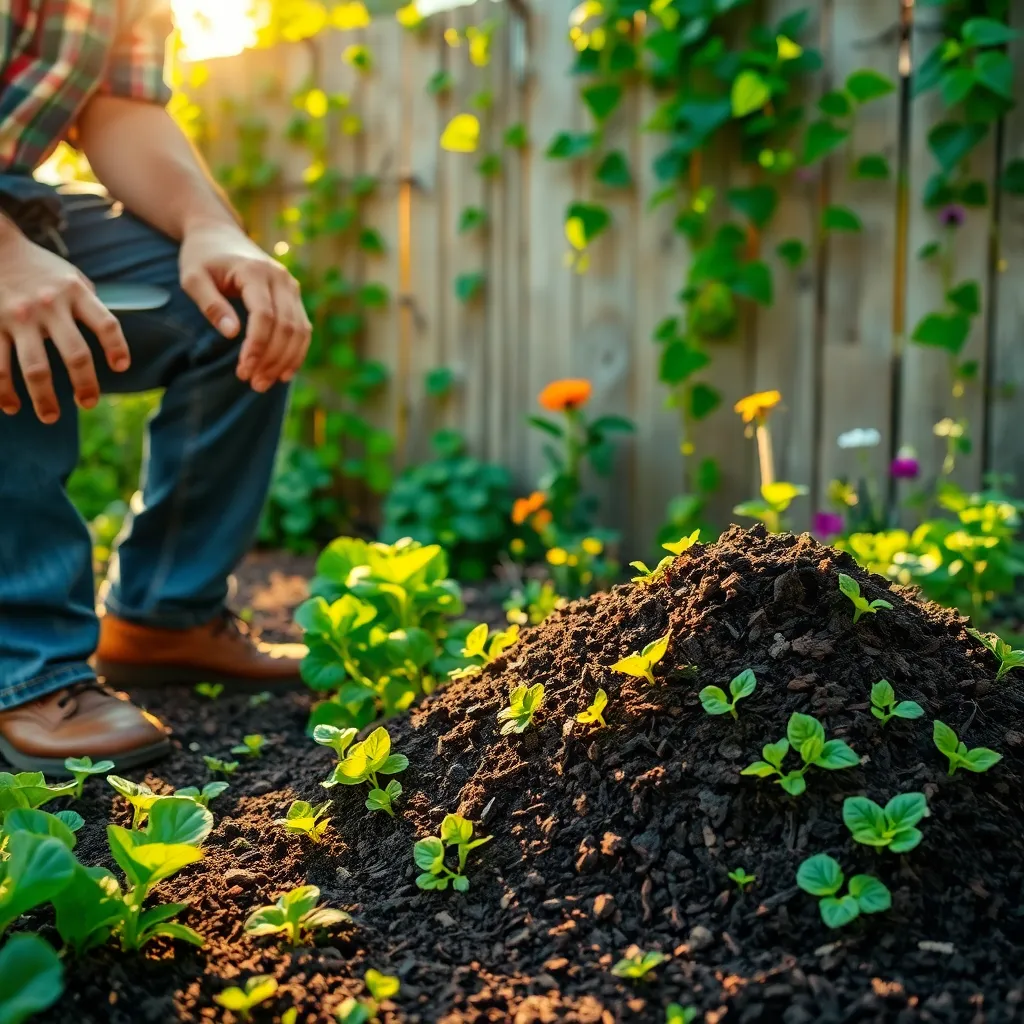
To transform your garden soil into a nutrient-rich haven for plants, consider integrating compost into your gardening routine. Compost not only enriches the soil but also improves its structure, making it crucial for both beginners and seasoned gardeners.
A great starting point is to create your own compost by using kitchen scraps such as fruit and vegetable peels, coffee grounds, and eggshells. Layering these organic materials in a compost bin with garden waste like leaves and grass clippings will kickstart the decomposition process.
Regularly turning your compost pile is essential to ensure proper aeration and faster decomposition. By doing so every few weeks, you help maintain the right balance of nutrients, which is beneficial for the microorganisms breaking down the organic matter.
Once the compost is dark and crumbly, it’s ready to be mixed into your garden soil. Work it into the top six inches of soil to boost its fertility, which will lead to healthier and more vibrant plants.
Advanced gardeners can experiment by making compost tea, an excellent liquid fertilizer. This involves steeping a small amount of compost in water for a day or two, creating a nutrient-rich solution that can be sprayed directly onto plant leaves or used as a soil drench.
Add Colorful Mulch Layers

Adding colorful mulch layers to your garden not only enhances its aesthetic appeal but also provides numerous benefits to your plants. Mulch helps retain moisture, suppress weeds, and improve soil quality, making it an essential component of any garden.
For an eye-catching display, consider using natural materials like pine bark, cocoa hulls, or straw, which can add rich hues to your garden beds. Pine bark offers a reddish-brown color, while cocoa hulls bring a deep chocolate tone, and straw provides a bright golden touch.
When applying mulch, ensure a layer thickness of about 2 to 3 inches to effectively conserve moisture and deter weeds. It’s important to keep the mulch a few inches away from plant stems to prevent rot and allow for proper air circulation.
For the more adventurous gardener, consider dyeing your mulch with natural colorants to create vibrant shades that complement your garden’s palette. Use beet juice for a red tint or turmeric powder for a yellow hue, ensuring that these natural dyes are safe and eco-friendly.
Grow Companion Flowers for Pests

Companion planting is a smart way to add color while naturally deterring pests in your garden. By planting flowers like marigolds and nasturtiums, you can reduce the need for chemical pesticides, making your garden more eco-friendly.
Marigolds are renowned for their pest-repelling properties, particularly against nematodes and aphids. Plant them around the perimeter of vegetable gardens, where they thrive in full sun and well-drained soil.
Nasturtiums are not only beautiful but also act as a trap crop, attracting aphids away from your vegetables. They prefer poor soil, which encourages more blooms, and require regular watering to maintain their lush appearance.
Consider adding calendula to your garden for its ability to repel a variety of insects while attracting beneficial pollinators. Calendula grows best in moderately rich, well-drained soil and requires consistent moisture, especially during dry periods.
For an advanced tip, interplant different companion flowers to create a vibrant ecosystem that supports biodiversity. By carefully planning your companion plants, you can create a visually stunning garden that is both productive and pest-resistant.
Recycle Water with Painted Barrels
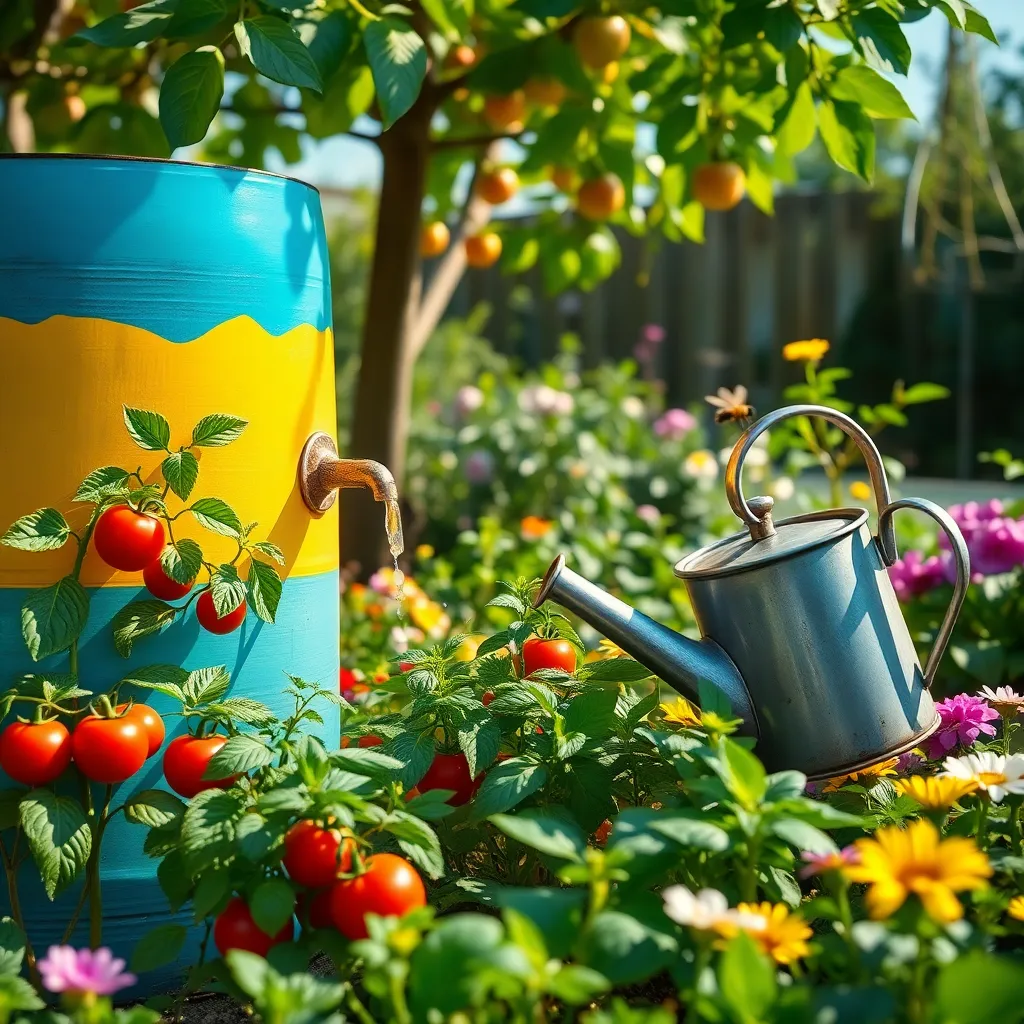
Recycling water with painted barrels is both an eco-friendly and decorative way to support your garden. Rain barrels capture and store rainwater runoff from your roof, providing a sustainable water source for your plants.
To start, position your barrel under a downspout where it can collect the most rainwater. Choose a barrel made from food-grade plastic to ensure safety, and paint it with non-toxic, outdoor acrylic paint to add a splash of color to your garden.
Ensure the barrel has a secure lid and a fine mesh screen to prevent debris and mosquitoes from entering the water. Use the stored water for your garden beds, containers, or lawn, especially during dry spells, to conserve household water usage.
Advanced gardeners can install a drip irrigation system connected to the rain barrel for efficient watering. This system helps deliver water directly to the plant roots, reducing evaporation and runoff. Remember to elevate your barrel on a sturdy platform to increase water pressure, making it easier to use a hose or watering can.
Create Vibrant Raised Garden Beds
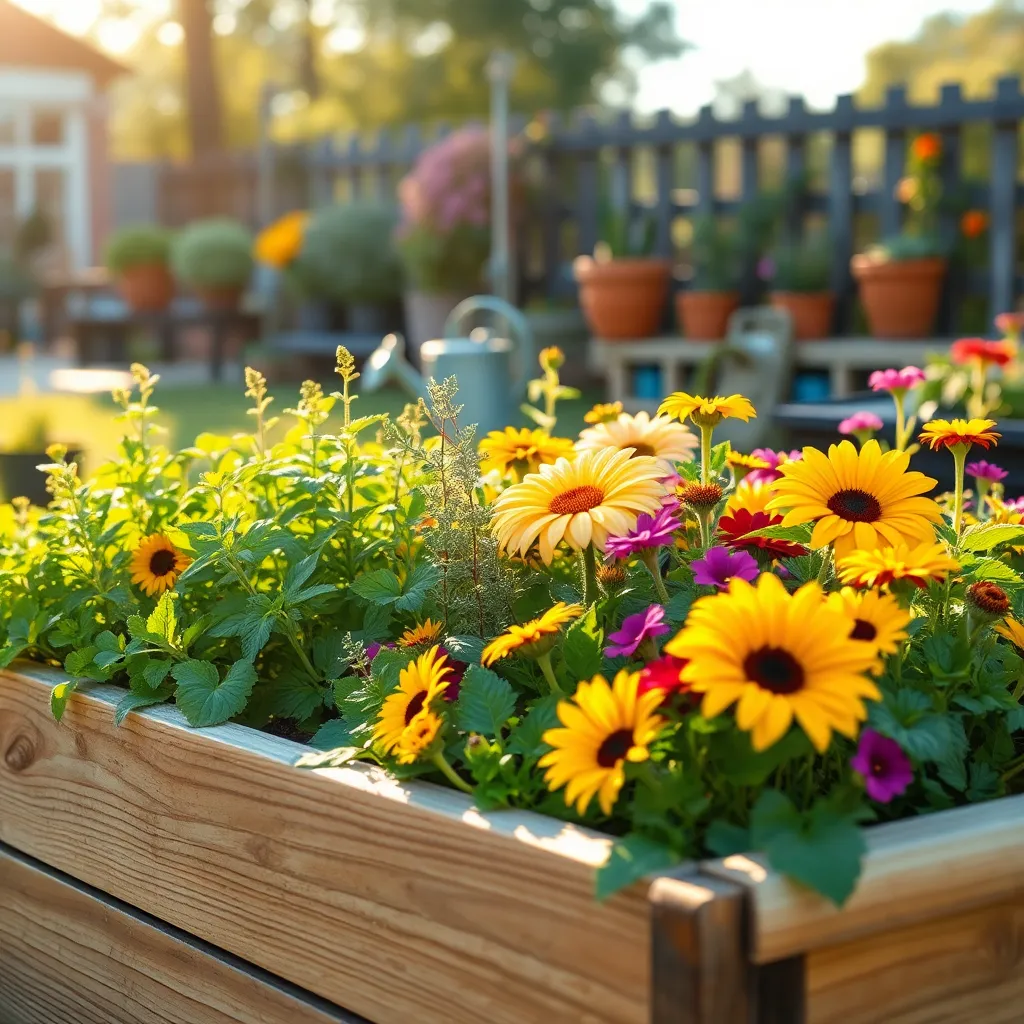
Raised garden beds are a fantastic way to add vibrancy and structure to any garden space, making it easier to manage soil quality and plant care. To start, use untreated wood, stone, or brick to construct your beds, ensuring they are at least 12 inches deep to accommodate root growth.
Before filling your raised beds, create a base layer with cardboard or newspaper to suppress weeds naturally. For soil, use a mixture of one-third topsoil, one-third compost, and one-third peat moss or coconut coir, which provides excellent drainage and nutrient retention.
Plant selection is key to achieving a colorful garden; consider bright options like rainbow chard, various lettuce cultivars, and marigolds for pest control. Group plants with similar sunlight and water needs to ensure efficient growth and maintenance, keeping taller plants at the back to maximize sun exposure.
Watering is crucial in raised beds, as they tend to drain faster than in-ground gardens. To retain moisture, apply a 2-3 inch layer of organic mulch, such as straw or wood chips, which also benefits soil health by breaking down over time.
Mix Edible Flowers with Greens

Incorporating edible flowers into your garden alongside greens can transform your plots into a vibrant, functional space. Not only do these flowers enhance the aesthetic appeal, but they also attract beneficial pollinators that can boost your garden’s productivity.
Choose varieties like nasturtiums, violets, and calendula that are both visually stunning and easy to grow. Nasturtiums, for instance, thrive in well-drained soil and full sun, making them a perfect companion for leafy greens like lettuce and kale.
For beginners, start by sowing seeds directly into your garden beds after the last frost. Ensure you space them adequately; about 12 inches apart is ideal to allow each plant enough room to flourish.
Experienced gardeners might experiment with interplanting techniques, pairing flowers with greens that have similar light and water requirements. Consider using a drip irrigation system to maintain consistent moisture levels, which is crucial for both greens and flowers.
To enhance the soil quality, mix in some organic compost before planting, which provides the necessary nutrients for robust growth. Regularly deadhead the flowers to encourage more blooms and prevent self-seeding if you want to control their spread.
Install Colorful Garden Markers
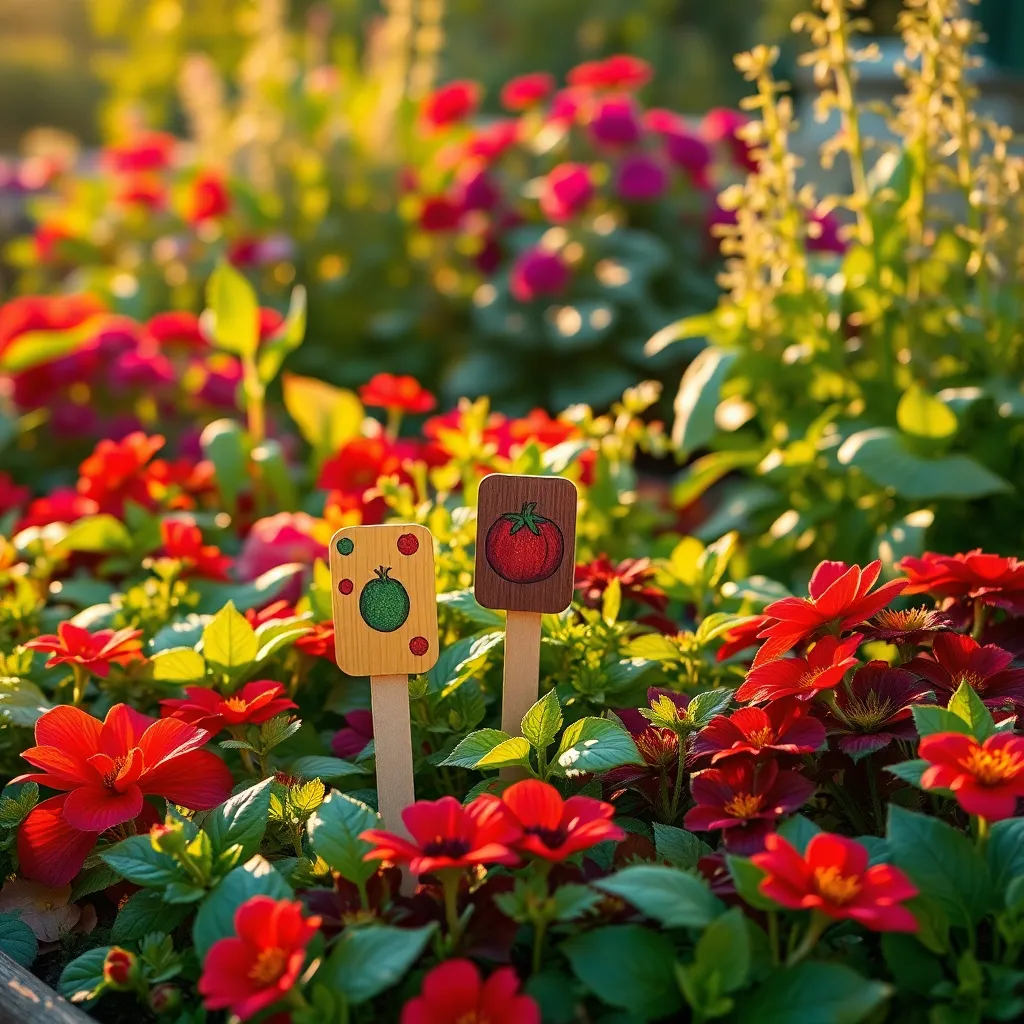
Colorful garden markers are an excellent way to add a splash of personality to your garden while keeping it organized. To create your own, gather some stones or wooden sticks, and use non-toxic paint to write the names of your plants in bold, bright colors.
These markers not only make your garden more vibrant but also help you quickly identify each plant, especially if you have a mix of similar-looking varieties. For a more eco-friendly approach, consider using recycled materials like old spoons or tiles that can easily be painted and repurposed as markers.
Place the markers at the base of each plant, ensuring they are clearly visible and do not interfere with plant growth. This setup is particularly useful for beginners who might still be learning plant identification and need a little extra guidance.
For a more advanced touch, you can include additional information on the markers, such as the planting date or specific care instructions like watering needs or sunlight preferences. This is especially helpful for plants with varying growth cycles, ensuring that you provide optimal conditions for each species.
Craft Natural Dyes from Plants
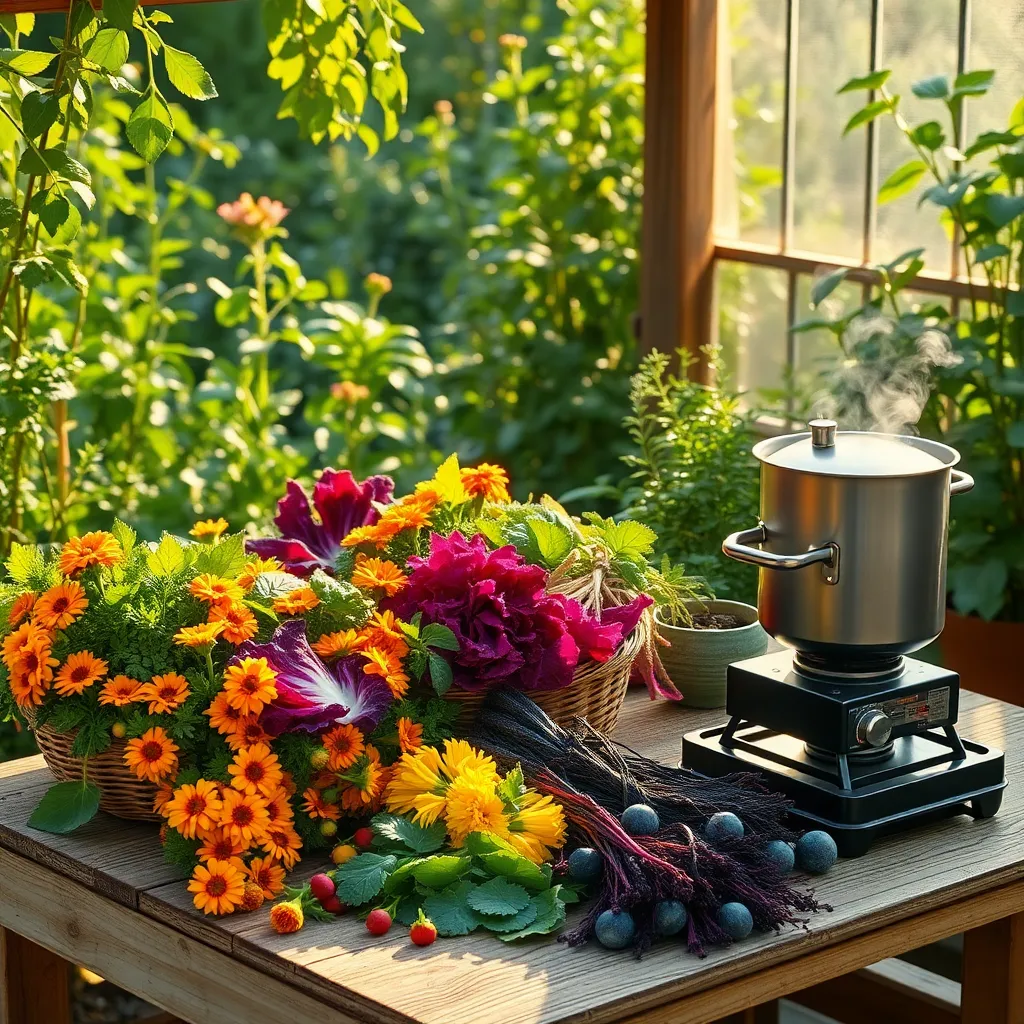
Transforming your garden into a source for natural dyes is both rewarding and eco-friendly. Many plants, such as marigolds, beets, and turmeric, can be used to produce vibrant colors that are perfect for dyeing fabrics.
Begin by selecting plants that are known for their dyeing properties. Marigolds are easy to grow in most climates, thriving in well-drained soil and full sunlight, and they can produce beautiful yellows and oranges.
For red and purple hues, consider growing beets, which prefer loamy, slightly acidic soil with a pH of 6.0 to 7.0 and regular watering to keep the soil consistently moist. Harvest beets once they reach about 2 to 3 inches in diameter for the best color extraction.
Turmeric is another excellent option for natural dye, providing rich golden tones. It requires a warm climate and should be planted in well-draining, sandy soil with plenty of sunlight and occasional watering to prevent the soil from drying out completely.
Once you’ve harvested your plants, it’s time to create your dyes. Chop the plant material finely and boil it in water to extract the color, adjusting the amount of water to achieve the desired shade.
For the best results, use a mordant such as alum to help the dye adhere to your fabric. Soak the fabric in the mordant solution before dyeing to ensure long-lasting color that remains vibrant over time.
Experiment with different combinations of plants to create a spectrum of unique colors. This not only enhances your gardening skills but also adds a personal touch to your fabric projects, encouraging creativity and sustainability.
Incorporate Rainbow Chard and Kale

Rainbow chard and kale are not only nutritious but also add a vibrant splash of color to your garden. These leafy greens thrive in well-draining soil enriched with organic matter, making them ideal for gardeners seeking both beauty and bounty.
To ensure a continuous harvest, sow seeds directly into the ground about 1/4 inch deep and 2 inches apart. Thin seedlings to about 12 inches apart for optimal growth, allowing enough room for their colorful leaves to spread out fully.
Rainbow chard loves consistent moisture, so water deeply once a week, ensuring the soil stays evenly moist but not waterlogged. A layer of organic mulch can help retain soil moisture and suppress weeds, benefiting both chard and kale.
If you’re growing kale, consider incorporating companion plants like onions or beets to deter pests naturally. For advanced gardeners, try succession planting every three weeks to enjoy a continuous supply of fresh leaves throughout the growing season.
Use Painted Rocks as Labels
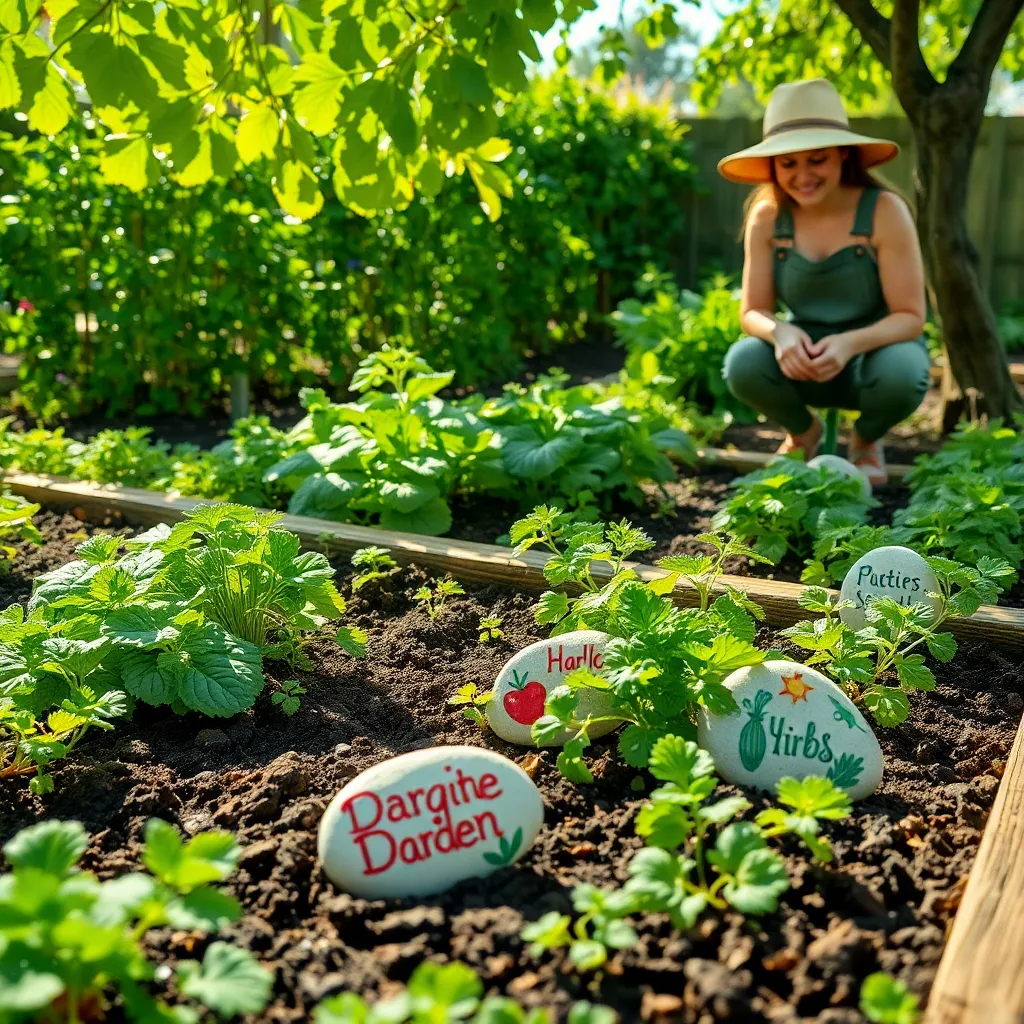
Adding painted rocks as labels is a creative way to keep track of your plants while adding vibrant color to your garden. Choose smooth, flat stones and use non-toxic, waterproof paint to write the name of each plant, ensuring the labels withstand weather conditions.
Before painting, clean the rocks thoroughly to remove any dirt that might prevent the paint from adhering well. For those who enjoy a bit of artistry, consider painting small illustrations of the plant beside its name for added charm and easy identification.
When placing your painted rock labels, situate them at the base of each plant to avoid disturbing growth. This method is particularly useful for identifying herbs and vegetables, which can look quite similar during their early stages of growth.
To ensure longevity, apply a coat of clear sealant over the painted surface once it’s dry. This extra step helps protect your artwork from fading due to sun exposure or frequent watering, keeping your garden looking lively and organized.
Hang Colorful Bird Feeders Nearby
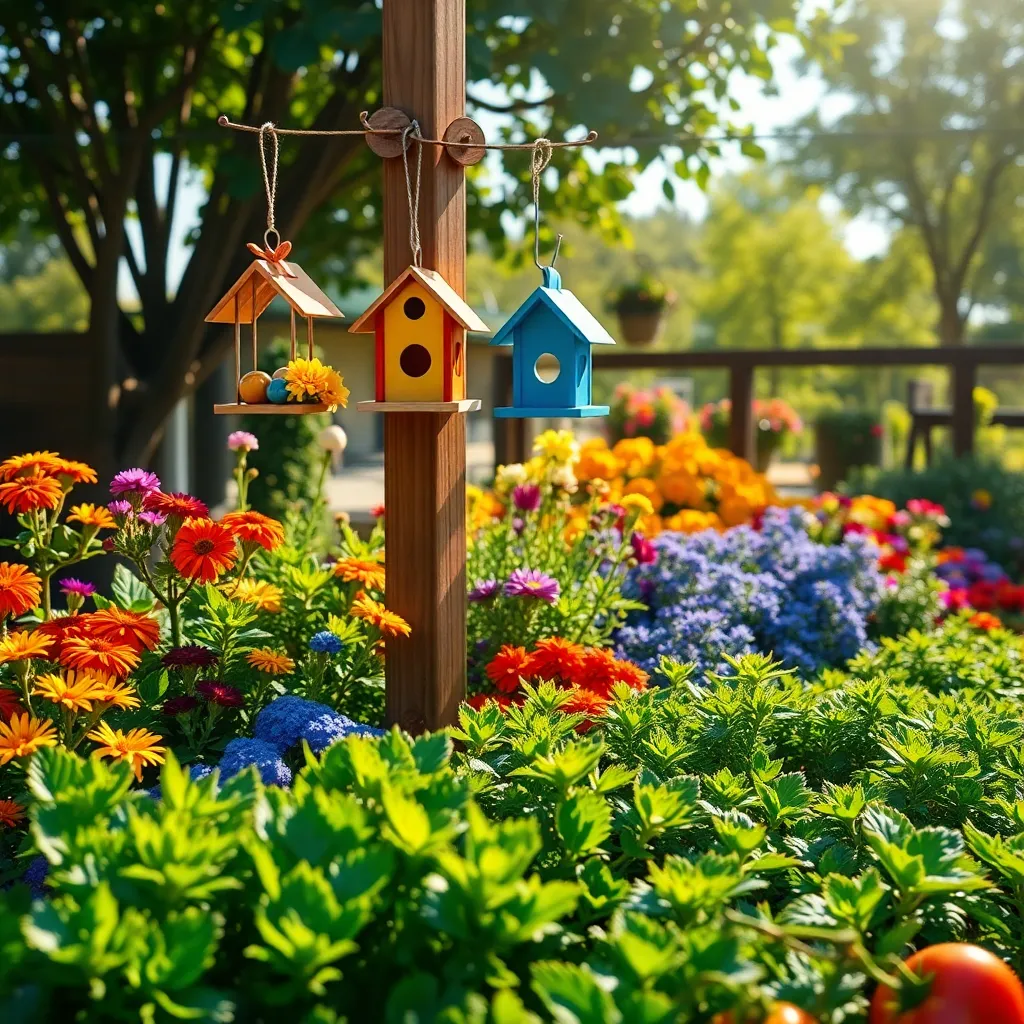
Hanging colorful bird feeders nearby can greatly enhance your garden’s ecosystem by attracting a variety of birds. These feathered visitors will not only bring vibrant activity and beauty to your garden but also help with natural pest control by feeding on insects.
To make the most of this hack, choose feeders that are easy to clean and refill, ensuring they stay a reliable food source for birds. Opt for feeders made from sustainable materials, such as recycled plastic or untreated wood, to maintain an eco-friendly garden environment.
Position the feeders at different heights and locations to cater to various bird species, which will increase the diversity of your garden’s avian visitors. Ensure they are placed away from areas of heavy foot traffic to provide a safe and inviting space for birds to feed without feeling threatened.
For an extra pop of color, consider painting the feeders in bright, non-toxic colors that will attract birds from afar. Remember to use bird-safe paint to avoid any harm to your feathered friends, and repaint annually to keep the feeders looking fresh and vibrant.
Conclusion: Growing Success with These Plants
In exploring the ’12 Colorful Organic Gardening Hacks,’ we’ve delved into innovative relationship concepts that nurture growth and vitality. From understanding the importance of a nourishing environment to recognizing the power of patience and persistence, these principles are as crucial in relationships as they are in gardening. We’ve highlighted the need for clear communication, the art of balancing space and togetherness, and the significance of celebrating small victories. Additionally, we’ve discussed fostering resilience, the beauty of diversity, and the wisdom of learning from nature’s cycles.
As an actionable step, choose one relationship concept that resonates most with you and implement it in your daily interactions. Whether it’s practicing active listening or embracing change, start small and watch your relationship flourish.
Bookmark this article as a valuable resource to revisit these concepts whenever you need a gentle reminder or a spark of inspiration. As you apply these principles, look forward to a future where your relationships are not only successful but also deeply fulfilling and resilient. Remember, just like a garden, relationships thrive with care, attention, and a touch of creativity. Embrace these hacks and watch your connections blossom!







